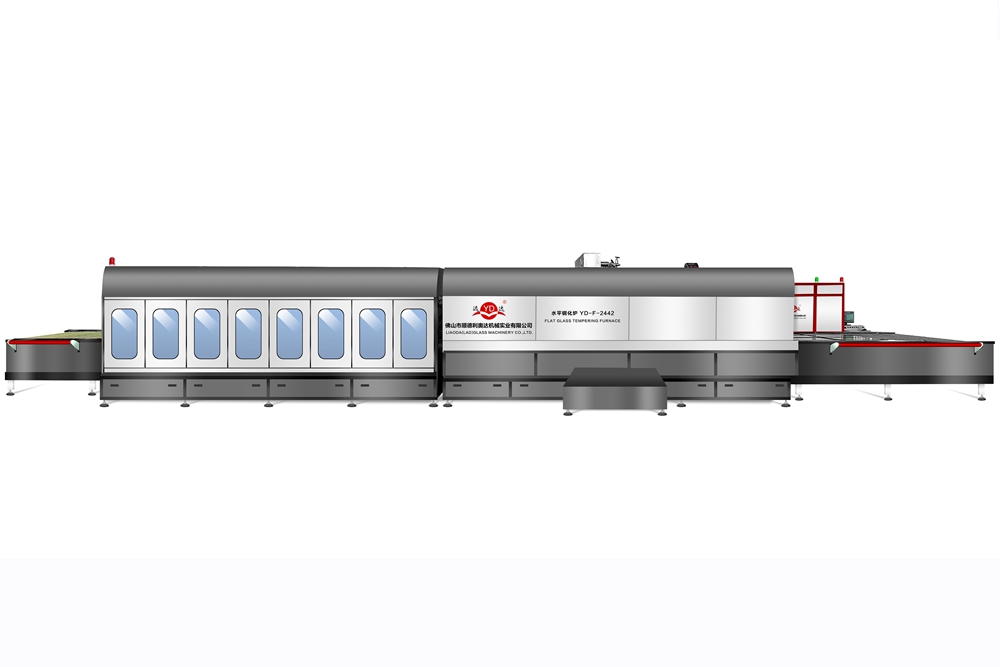Glass tempering is a crucial process in various industries, from construction and automotive to consumer electronics and household goods. Modern glass tempering technology has evolved significantly, offering enhanced safety, strength, and versatility for glass products. This guide explores the key aspects of contemporary glass tempering technology, including the process, machinery, benefits, and recent innovations.
The Glass Tempering Process
Glass tempering involves heating glass to a high temperature and then rapidly cooling it to increase its strength and safety. The process typically consists of three main stages:
1. Heating: The glass is placed in a tempering furnace and heated to temperatures between 600°C and 700°C. At this temperature, the glass reaches a softening point but does not melt.
2. Quenching: The heated glass is quickly transferred to the quenching section, where it is rapidly cooled using high-pressure air jets. This rapid cooling creates a balance of tensile and compressive stresses within the glass, significantly enhancing its strength.
3. Cooling: The glass is gradually cooled to room temperature, allowing the internal stresses to stabilize. The result is tempered glass that is much stronger and more resistant to impact than untreated glass.
Tempered glass is known for its safety features. When broken, it shatters into small, blunt pieces rather than sharp shards, reducing the risk of injury. This property makes tempered glass ideal for applications where safety is a primary concern.
Key Components of Modern Glass Tempering Machines
Modern glass tempering machines are designed to perform the heating and quenching processes with high precision and efficiency. Key components of these machines include:
Tempering Furnace: The furnace is the heart of the tempering machine, responsible for heating the glass to the required temperature. Advanced tempering furnaces feature improved insulation, efficient heating elements, and precise temperature control systems to ensure uniform heating.
Quenching Section: The quenching section consists of a series of high-pressure air nozzles that cool the glass rapidly. The design and arrangement of these nozzles are critical to achieving uniform cooling and minimizing optical distortion.
Conveyor System: The conveyor system transports the glass through the heating and quenching stages. It is designed to handle different glass sizes and thicknesses while ensuring smooth and precise movement.
Control System: Modern tempering machines are equipped with sophisticated control systems that monitor and adjust the heating and cooling processes in real time. These systems ensure consistent quality and optimize energy consumption.
Benefits of Modern Glass Tempering Technology
The advancements in glass tempering technology have brought numerous benefits to various industries:
Enhanced Safety: Tempered glass is much safer than regular glass due to its ability to shatter into small, blunt pieces. This property makes it ideal for applications such as automotive windows, building facades, and shower doors.
Increased Strength: Tempered glass is up to four to five times stronger than untreated glass. This increased strength allows for the use of thinner and lighter glass in many applications, reducing material costs and weight.
Thermal Resistance: Tempered glass can withstand significant temperature fluctuations without breaking. This thermal resistance makes it suitable for applications exposed to varying temperatures, such as oven doors and solar panels.
Versatility: Modern tempering machines can handle a wide range of glass types, sizes, and thicknesses. This versatility allows manufacturers to produce tempered glass for diverse applications, from large architectural panels to intricate electronic displays.
Innovations in Glass Tempering Technology
Recent innovations in glass tempering technology have further enhanced the process's efficiency, quality, and capabilities:
Low-E Glass Tempering: Low-emissivity (Low-E) glass is coated with a thin metallic layer that improves its thermal insulation properties. Modern tempering machines are equipped with specialized systems to temper Low-E glass without damaging the coating, making it ideal for energy-efficient windows and doors.
Automated Loading and Unloading: Automation has significantly improved the efficiency of glass tempering machines. Automated loading and unloading systems reduce manual labor, increase production speed, and minimize the risk of handling errors.
Real-Time Monitoring and Control: Advanced control systems with real-time monitoring capabilities ensure precise temperature control and uniform cooling. These systems can detect and correct deviations instantly, ensuring consistent product quality.
Energy Efficiency: Modern tempering machines are designed with energy-saving features such as improved insulation, efficient heating elements, and smart control systems. These features reduce energy consumption and operating costs while maintaining high production standards.
Digital Twin Technology: Some advanced tempering systems use digital twin technology, creating a virtual replica of the tempering process. This digital model allows operators to simulate and optimize the process before actual production, reducing trial-and-error and improving efficiency.
Conclusion
Modern glass tempering technology has revolutionized the production of safe, strong, and versatile glass products. By understanding the key components and benefits of advanced tempering machines, as well as the latest innovations in the field, businesses can enhance their production capabilities and meet the growing demand for high-quality tempered glass. Investing in modern tempering technology not only improves product quality and safety but also increases efficiency and reduces operating costs, making it a valuable asset for any glass processing operation.
